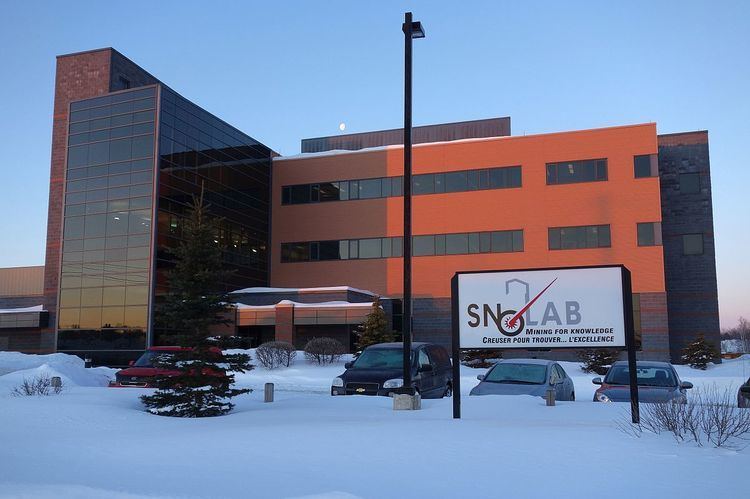Phone +1 705-692-7000 | ||
 | ||
Similar LifeLabs, Vale Superstack, Copper Cliff Public School, Dynamic Earth – Home of t, Vale Copper Cliff Com Profiles | ||
Snolab inside the dark matter lab buried over a mile underground
SNOLAB is a Canadian underground physics laboratory at a depth of 2 km in Vale's Creighton nickel mine in Sudbury, Ontario. The original Sudbury Neutrino Observatory (SNO) experiment has ended, but the facilities have been expanded into a permanent underground laboratory.
Contents
- Snolab inside the dark matter lab buried over a mile underground
- A day at snolab
- History
- Experiments
- References
Although accessed through a mine, the laboratory proper is maintained as a class-2000 cleanroom, with very low levels of dust and background radiation.
SNOLAB is the world's second-deepest underground lab facility; its 6,800 feet (2,070 m) overburden of rock provides 6010 metre water equivalent (MWE) shielding from cosmic rays, providing a low-background environment for experiments requiring high sensitivities and extremely low counting rates.
A day at snolab
History
The Sudbury Neutrino Observatory was the world's deepest underground experiment since the Kolar Gold Fields experiments ended with the closing of that mine in 1992. With the deepest underground laboratory in North America at 2100 metre water equivalent depth, and the deepest in the world at 4800 m.w.e., many other groups were interested in conducting experiments in the 6000 m.w.e. location.
In 2002, funding was approved by the Canada Foundation for Innovation to expand the SNO facilities into a general-purpose laboratory, and more funding was received in 2007 and 2008.
Construction of the major laboratory space was completed in 2009, with the entire lab entering operation as a 'clean' space in March 2011.
SNOLAB was briefly the world's deepest underground laboratory, until it was surpassed by the 2.4 km-deep China Jinping Underground Laboratory at the end of 2010. CJPL achieves a muon flux of less than 0.2 μ/m²/day, slightly less than SNOLAB's 0.27 μ/m²/day. (For comparison, the rate on the surface, at sea level, is about 15 million μ/m²/day.)
The planned DUSEL laboratory in the United States, which would have been deeper, was greatly scaled back after the National Science Foundation refused major funding in 2010.
Experiments
As of September 2015 SNOLAB hosts five operating physics experiments:
Four more experiments are currently under construction:
Five experiments have completed and are no longer operating:
Additional planned experiments have requested laboratory space such as the next-generation nEXO, COBRA Experiment searches for neutrinoless double beta decay, and the New Experiments With Spheres (NEWS) electrostatic dark matter detector. There are also plans for a larger PICO-250L detector.
The total size of the SNOLAB underground facilities, including utility spaces and personnel spaces, is:
